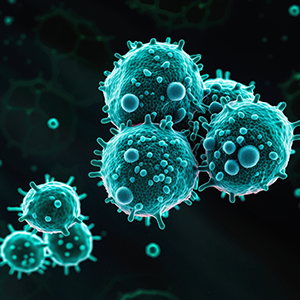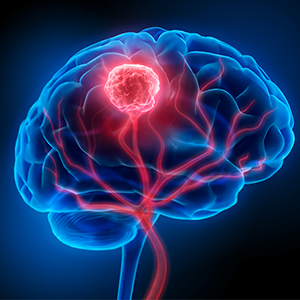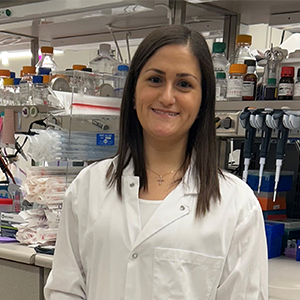
By Mayo Clinic Laboratories
In a newly published study, a team from Mayo Clinic’s Advanced Diagnostics Laboratory has developed a mass spectrometry-based assay that’s able to detect COVID-19 (SARS-CoV-2) pathogens from human proteins with, remarkably, 98% sensitivity and 100% specificity. This is the first assay of its kind that can detect viral antigens “directly from clinical specimens” such as nasopharyngeal swabs. Mass spectrometry is a sensitive technique used to detect, identify, and quantitate molecules present in a sample.
“When you swab the nose, it picks up a sea of human proteins from which you’re trying to detect miniscule amounts of virus — it’s a needle in a haystack challenge,” says Akhilesh Pandey, M.D., Ph.D., professor of Laboratory Medicine and Pathology at Mayo Clinic, who co-led the study along with Stefan Grebe, M.D., Ph.D., and Ravinder Singh, Ph.D. “With the method developed by our team, we can start with this sea of proteins, this raw material direct from the specimen, and we can tell you if we have viral particles or not.”

This is no small accomplishment, considering previous and current mass spectrometry-based tests are not capable of detecting pathogens direct from clinical specimens. Instead, a “pure culture” first must be grown from the sample, which is time consuming and not always successful. “You have to put the clinical specimen on a plate and allow the bacteria or fungi to grow into colonies as pure organisms,” says Dr. Pandey. “Only then can the mass spectrometer detect them. But with the method we’ve developed, this step isn’t necessary, and that’s what is really great about it.”
The team used an RT-PCR assay as a benchmark for the study because, as the pandemic unfolded, this assay became the “de facto” gold standard for detecting SARS-CoV-2 pathogens. But RT-PCR uses a different molecular technology and requires reagents that have not always been readily available. Thus, the team wanted to develop an alternative method that can be quickly “adapted for detection of novel variants of SARS-CoV-2 as they appear.”
Right now, the novel assay requires cutting-edge mass spectrometry instruments and elevated expertise, but the team envisions its eventual use by other microbiology labs once it’s refined into a kind of “lab kit” that’s more user-friendly. The assay has shown potential to detect pathogens from other body fluids as well. “Our method is quite robust, because proteins are very stable,” says Dr. Pandey. “We’ve already demonstrated this assay can also detect the SARS-CoV-2 virus antigens in the urine.”
The team can also envision this method being used to detect pathogens in blood samples, for example, from hospital patients with sepsis. “People with sepsis are often deathly sick by the time they’re admitted to the hospital,” says Dr. Pandey. “Normally, a blood sample is taken that must be cultured, and all of this takes many hours or days to try to detect the pathogen. But our mass spectrometry method could take that sample and identify the bacteria directly in the blood without culturing. I think that is the next killer application for an assay like this.”
This article originally appeared in the Mayo Clinic Advanced Diagnostic Laboratory blog.
Learn more
Read more stories about advances in individualized medicine.
Register to get weekly updates from the Mayo Clinic Center for Individualized Medicine blog.
Join the conversation
For more information, visit Mayo Clinic Center for Individualized Medicine, or Twitter at @MayoClinicCIM.

Related Articles







